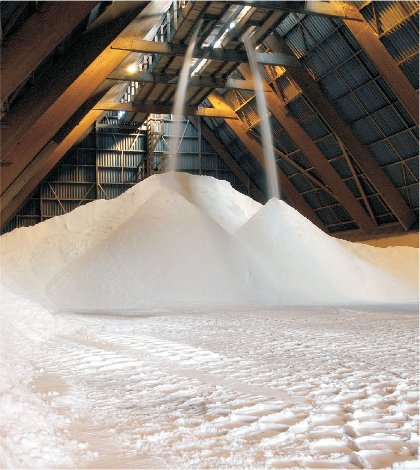SPOILER ALERT!
The Very Best Reason You Should Not Buy Important Uses Of Caustic Soda
Access in-depth petrochemicals information
Indeed, sodium hypochlorite is the oldest and still most essential chlorine-based bleach. Wearing the proper security equipment should considerably cut back the occurrence of skin or eye contact.
Sodium hydroxide is a white, stable materials that picks up moisture from the air. Both the stable and its options are very corrosive and may trigger extreme burns. sodium hydroxide in soap is a member of a gaggle of chemical compounds also known as bases or alkalies, which may neutralize and are neutralized by, acids, releasing lots of heat. Sodium hydroxide is a white, noncombustible stable that absorbs moisture from the air. When the strong is in contact with water, it could generate sufficient warmth to ignite flamable supplies.
Safety Equipment and Clothing – Avoid any skin contact with caustic soda. Despite the heavy regulation governing chemical producers and transporters together with the extraordinary care they take in dealing with hazardous supplies like caustic soda, spills and other accidents can sometimes occur. As corrosive to biological materials as sodium hydroxide is (coupled with the truth that there are several substances it reacts with) it is important to know the way to properly clear a caustic soda spill. It’s essential to notice that sodium hydroxide isn't protected for direct consumption.
Chemical pulping
Why caustic soda is used for cleaning?
Caustic soda (sodium hydroxide) is a versatile alkali. Its main uses are in the manufacture of pulp and paper, alumina, soap and detergents, petroleum products and chemical production. Other applications include water treatment, food, textiles, metal processing, mining, glass making and others.
The United States Department of Agriculture (USDA) maintains strict rules over many products grown, raised and produced for human consumption. Sodium hydroxide is the main ingredient in family merchandise similar sodium hydroxide to liquid drain cleaners. Lye refers to sodium hydroxide [aka caustic soda, chemical method NaOH] or potassium hydroxide [aka caustic potash, chemical formulation KOH].
Concentrated vapors result in serious harm to the eyes and respiratory system. Oral ingestion of sodium hydroxide, which occurs incessantly in children, causes extreme tissue necrosis, with stricture formation of the esophagus, usually leading to demise. Contact with the pores and where to buy sodium hydroxide skin could lead to contact dermatitis, hair loss, in addition to necrosis as a result of extreme irritation 7. Sodium Hydroxide is an inorganic compound used to control the pH levels or serve as a buffering agent in cosmetics and private care products.
- In its natural room-temperature state, caustic soda is a stable, but because it readily dissolves in water, it is usually offered and transported as a solution of various concentrations.
- When caustic soda is combined with water or an acid, there is a strong exothermic reaction the place heat is released, which can be utilized as a source of energy to trigger other chemical processes.
Potassium hypochlorite was first produced in 1789 by Claude Louis Berthollet in his laboratory on the Quai de Javel in Paris, France, by passing chlorine gasoline via a solution of potash lye. The ensuing liquid, known as "Eau de Javel" ("Javel water"), was a weak answer of potassium hypochlorite. Antoine Labarraque replaced potash lye by the cheaper soda lye, thus acquiring sodium hypochlorite (Eau de Labarraque).
It may not be attainable to correctly ascertain the diploma of injury to eyes for up to 72 hours after exposure. Exposure to sodium hydroxide stable or resolution caustic soda producers could cause pores and skin and eye irritation. Direct contact with the strong or with concentrated options causes thermal and chemical burns leading to deep-tissue accidents.
The solution must be saved below forty °C (by cooling coils) to forestall the undesired formation of sodium chlorate. According to theFederal Motor Carrier Safety Administration (FMCSA), sodium hydroxide is aClass eight (corrosive) hazardous material, that means autos and railcars transporting the substance are required to bear the appropriate placard. The United Nations (UN)number for sodium hydroxide is 1823 for its solid kind and1824 for the liquid caustic soda answer must also be used on the placard. The placard for each types of caustic soda is a black-and-white normal diamond form with an image representing a cloth dissolving a solid mass and burning a hand.
Very strong solutions of sodium hydroxide can hydrolyze proteins in the eyes, leading to extreme burns and eye injury or, in extreme cases, blindness. At room temperature, anhydrous sodium hydroxide is a white crystalline, odorless strong that absorbs moisture from the air.
When dissolved in water or neutralized with acid, it liberates substantial heat, which can be adequate to ignite flamable supplies. Sodium hydroxide is frequently used as an industrial cleaning agent where it's often called caustic soda sellers "caustic". It is added to water, heated, after which used to clean process tools, storage tanks, etc. It can also be used for cleansing waste discharge pipes underneath sinks and drains in home properties.
It may cause extreme burns and permanent damage to any tissue that it comes in contact with. caustic soda wilko of harm to the gastrointestinal tract will not be clear until several hours after ingestion. Inhaled sodium hydroxide can cause swelling of the larynx and an accumulation of fluid in the lungs. Contact with 25-50% options produces immediate irritation, while after contact with options of four% or less, irritation might not develop for several hours.

